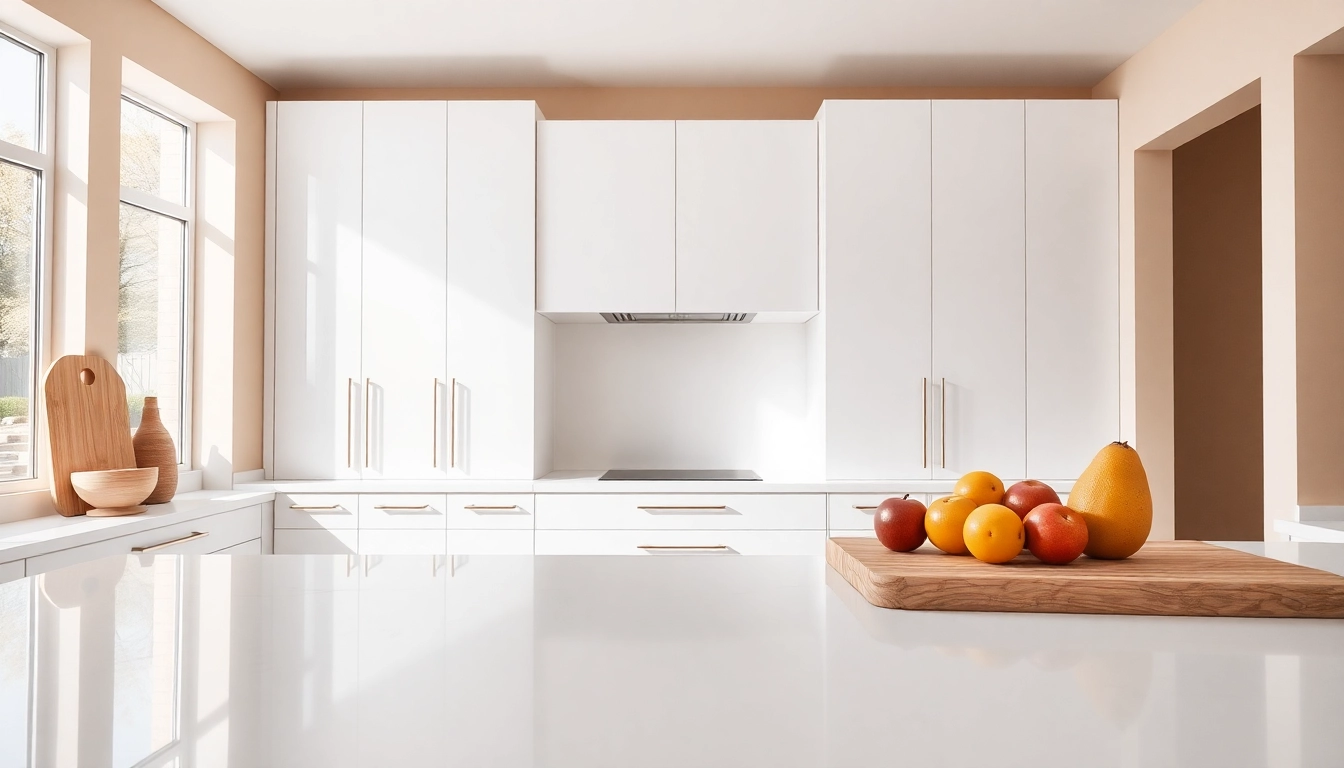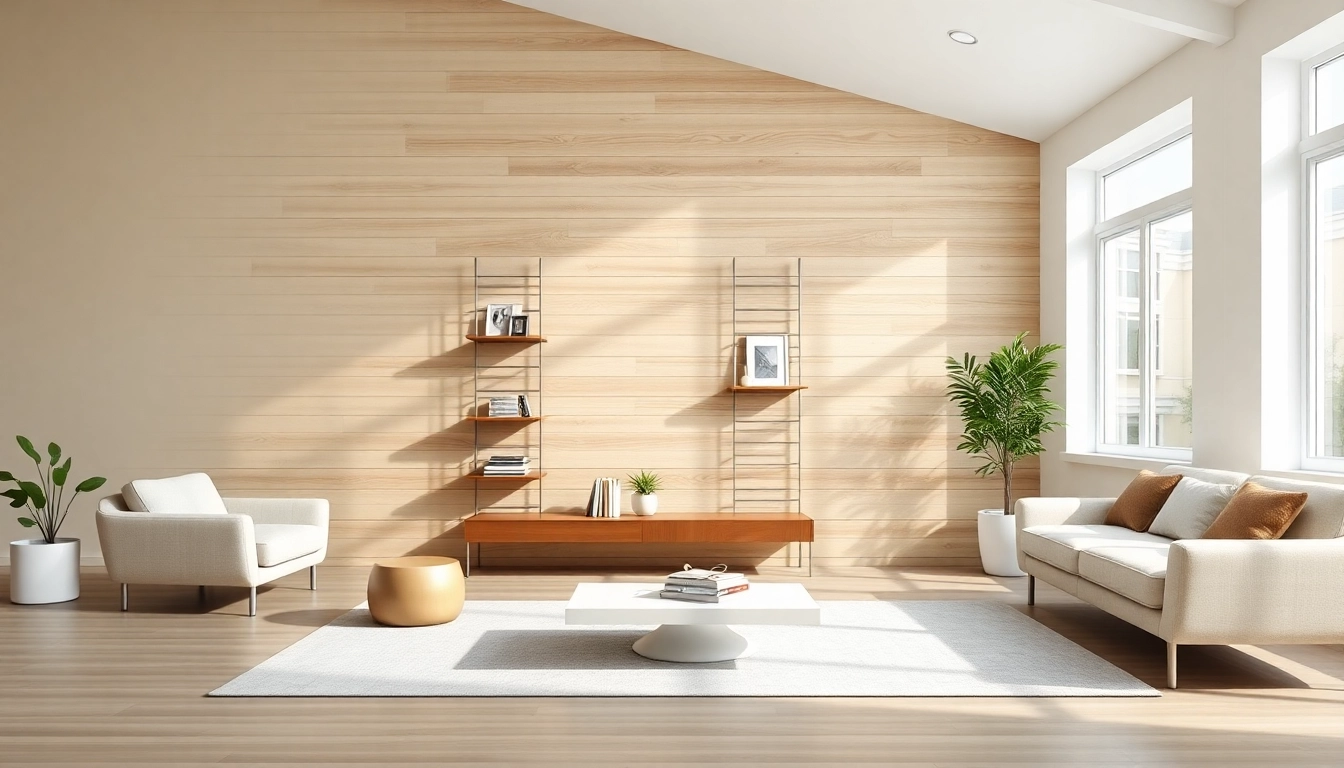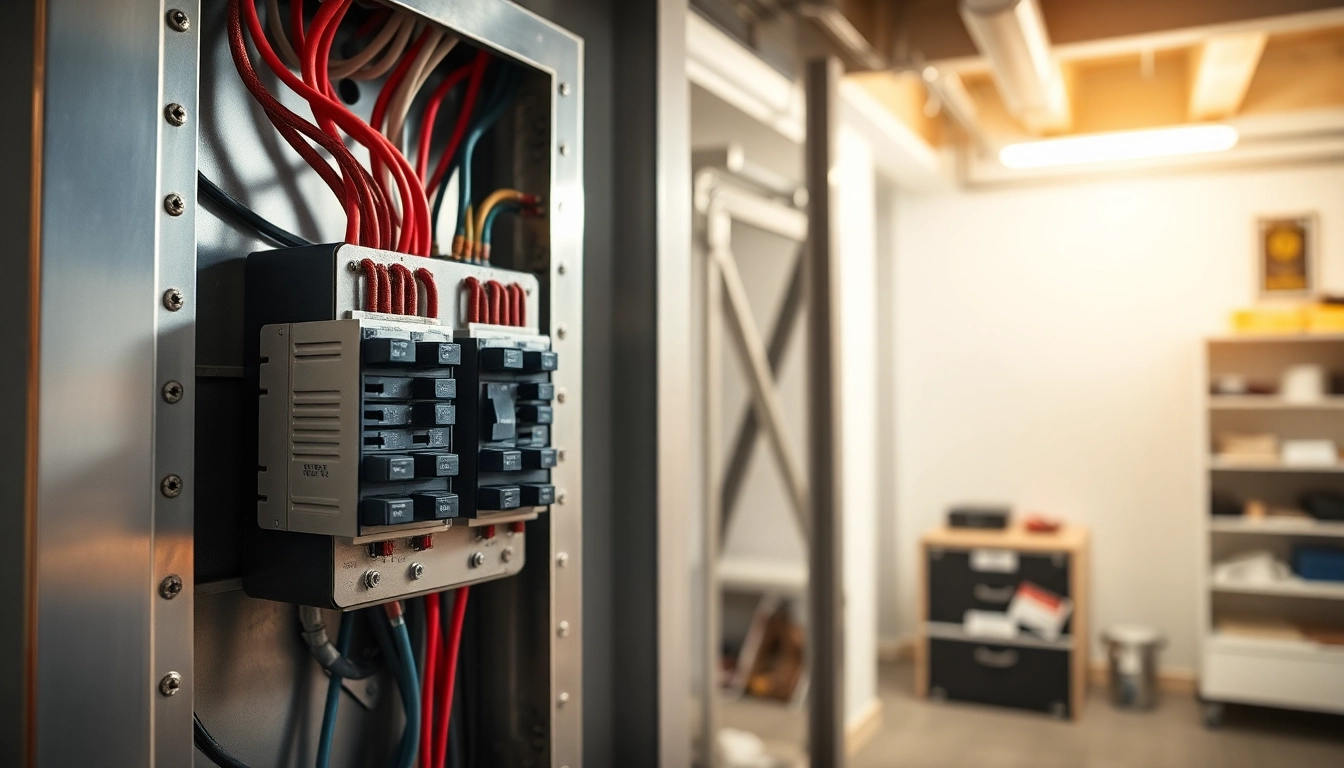Introduction to White Cabinets
When it comes to home design, white cabinets have always held a special place in kitchens, bathrooms, and even living spaces. Their timeless nature and versatility make them a favorite among homeowners and designers alike. White cabinets not only bring a fresh and airy feel to a room, but they also have the unique capability of complementing various design styles, from traditional to modern. In this comprehensive guide, we explore everything you need to know about white cabinets—from their definition and benefits to installation tips and maintenance practices.
What are White Cabinets?
White cabinets are cabinetry that comes in white or has been painted or finished in shades of white. They can be made from various materials, including wood, laminate, and MDF (medium-density fiberboard). In addition to being visually appealing, white cabinets are practical, reflecting light in a way that brightens up spaces, making even small rooms appear larger. Historically, white cabinets have been widely used in kitchens to create a clean, classic look, but their adaptability has led to their use in almost every room in a house.
Benefits of Using White Cabinets
There are numerous benefits to incorporating white cabinets into your home design:
- Timeless Appeal: White cabinets never go out of style. They can easily adapt to changing design trends, making them a wise long-term investment.
- Versatility: They can fit seamlessly into any design style, whether it’s modern, traditional, rustic, or contemporary.
- Light Reflection: White surfaces reflect light, creating an illusion of a brighter and more spacious environment.
- Ease of Coordination: White cabinets pair beautifully with a range of countertop materials, flooring, and wall colors, offering unlimited design opportunities.
- Enhanced Resale Value: Homes with white cabinets are often preferred by potential buyers, enhancing the property’s market value.
Styles of White Cabinets
White cabinets come in various styles, catering to different aesthetic preferences. Here are a few popular options:
- Shaker Style: Characterized by a simple, clean design with a recessed panel, shaker cabinets exude a casual charm that suits both modern and traditional interiors.
- Flat-Panel Cabinets: These cabinets boast a minimalist feel with a sleek, flat surface, ideal for contemporary spaces.
- Beadboard Cabinets: Featuring vertical panels, beadboard cabinets add texture and depth, making them perfect for a cottage or farmhouse style.
- Distressed Cabinets: For a rustic touch, distressed white cabinets offer character and warmth, often used in country or eclectic design themes.
Choosing the Right White Cabinets for Your Space
Choosing the perfect white cabinets involves careful consideration to ensure they fit harmoniously into your space. Here are essential factors to keep in mind:
Factors to Consider
- Room Size: Evaluate the size of your space; larger kitchens may benefit from bold white cabinetry, while smaller rooms might require more subtle tones or designs.
- Lighting: Consider the natural light available in your room. Rooms with ample light can afford to have more striking whites, while darker areas might benefit from warmer shades.
- Existing Décor: Align the style of white cabinets with your current decor. Take note of other colors and materials used in the space.
- Functionality: Depending on the use of the area, consider how much storage you need, ensuring the cabinet design offers practical solutions for your lifestyle.
Measuring Your Space
Once you identify your needs, the next step is proper measurements to ensure a good fit. Here’s how to do it effectively:
- Measure the width, depth, and height of the area where you plan to install the cabinets.
- Account for appliances, doors, and windows in your measurements, ensuring you leave adequate space for movement.
- Consider the layout; for example, an L-shaped kitchen may require additional corner cabinet solutions.
Determining Your Style Preference
Take stock of your design preferences and lifestyle to determine which style of white cabinets best suits your needs. Consider creating a mood board with images that resonate with you. This visual reference will serve as guidance throughout your selection process, allowing you to align your cabinet choice with the overall design vision for your space.
Installation Tips for White Cabinets
Installing white cabinets can be a fulfilling project whether you choose to do it yourself or hire a professional. Here are some essential tips to ensure a smooth installation:
Preparation and Planning
Preparation is critical to a successful installation. Follow these steps:
- Gather Tools: Ensure you have all the necessary tools, including a level, screwdriver, measuring tape, and drill.
- Read Instructions: Familiarize yourself with the installation instructions provided by the manufacturer. Each cabinet may have specific requirements.
- Prepare the Area: Clear the installation space of any existing cabinets, appliances, or debris. Ensure the walls and floors are clean and level.
DIY vs. Professional Installation
Deciding between DIY installation and hiring a professional depends on several factors:
- Skill Level: If you have experience with home improvement projects, you may feel confident tackling the job yourself.
- Time Availability: DIY projects can be time-consuming. Ensure you have ample time set aside to complete the installation without feeling rushed.
- Complexity: If your cabinetry plan includes intricate designs or custom dimensions, enlisting a professional might save you time and potential frustration.
Common Installation Mistakes to Avoid
Be mindful of these common installation pitfalls that can undo your hard work:
- Skipping Measurements: Always double-check your measurements to avoid costly errors in cabinet size and fit.
- Ignoring Wall Studs: Failing to secure your cabinets to wall studs can lead to stability issues.
- Neglecting Leveling: Always use a level during installation. Uneven cabinets can create functional and aesthetic problems.
Maintaining Your White Cabinets
To keep white cabinets looking pristine, regular maintenance is essential. Here are effective strategies:
Cleansing Techniques
The right cleaning techniques can help maintain the beauty of your white cabinets. Consider the following:
- Gentle Cleaners: Use mild soap and warm water for routine cleaning. Avoid harsh chemicals that can damage finishes.
- Microfiber Cloths: Opt for soft, lint-free cloths when wiping down surfaces to avoid scratches.
- Spot Cleaning: For stubborn spots, a mix of baking soda and water can effectively lift stains without damaging the finish.
Dealing with Stains and Scratches
Stains and scratches are inevitable over time, but there are methods to address them:
- For Stains: Dampen a cloth with a mix of vinegar and water to remove sticky residues or grease.
- For Scratches: Use a wood repair marker or a DIY paste made from walnut and olive oil to fill in minor scratches.
- Refinishing: For deeper scratches or discoloration, refinishing the affected area may be necessary to restore the original look.
Periodic Maintenance Routines
Incorporating periodic maintenance routines ensures your cabinets remain in prime condition:
- Perform a deep clean every few months, focusing on hardware and crevices.
- Reapply sealants or protective coatings as needed, especially for painted cabinets.
- Inspect for wear and tear regularly, making necessary repairs promptly to maintain functionality.
Trending Designs with White Cabinets
White cabinets are not only functional but also serve as a canvas for trending design styles that can rejuvenate your home. Below are some of the latest trends you might want to consider:
Open Concept Living Spaces
The trend of open concept living continues to gain popularity. White cabinets act as a unified element that bridges kitchen areas with dining and living spaces. Here’s how to enhance this open design:
- Utilize a consistent white cabinet design throughout the space to create visual harmony.
- Pair white cabinets with contrasting elements, such as dark countertops or colorful backsplashes, to establish focal points.
- Keep decor minimal, allowing the white cabinetry to be the statement piece that complements the overall aesthetic.
Combining Colors with White Cabinets
Incorporating color into your cabinetry can add personality and depth. Consider these approaches:
- Accent Colors: Use bolder colors for island cabinets or lower cabinets to contrast against white uppers, making a stylish statement.
- Two-Tone Combinations: Mixing white cabinets with other wood or paint finishes can create visual interest and tailor the design to your taste.
- Textured Finishes: Incorporate matte or glossy textures with white cabinets for a modern twist that adds dimension.
Transitioning Styles: From Traditional to Modern
White cabinets offer flexibility to seamlessly transition design styles. For those looking to blend traditional elements with modern accents, explore the following:
- Combine classic white shaker cabinets with industrial-style hardware, effortlessly merging both worlds.
- Enhance kitchen spaces with glass-front white cabinets that showcase curated dishware while maintaining a fresh modern look.
- Introduce personal touches such as contemporary light fixtures or artistic backsplashes that align with the cabinet’s clean aesthetic.
In conclusion, the allure of white cabinets lies in their versatility, timeless style, and ability to transform any space. By understanding their benefits, selecting the appropriate style, and implementing careful maintenance routines, you can ensure that your white cabinets remain a stunning feature of your home for years to come.



